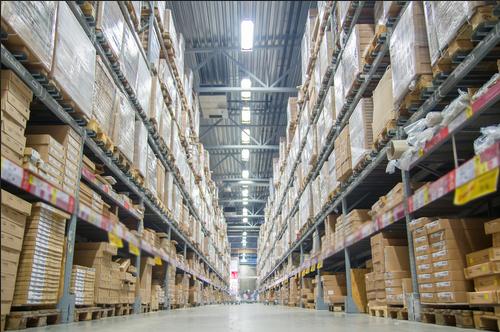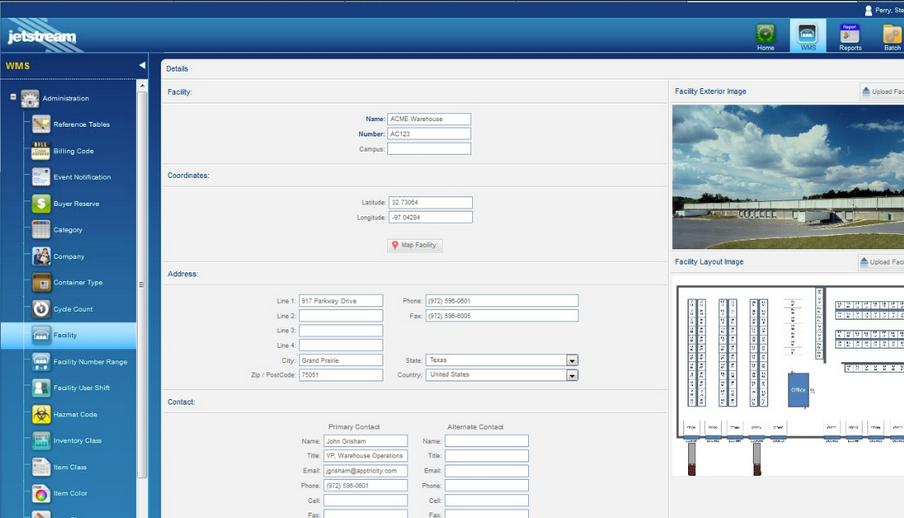How Automated Systems Overcome the Challenges of Warehouse Management

By Tim Garcia
We live in an on-demand world that has made having an agile supply chain more important to mission success than ever before.
Some reasons for the new emphasis are common sense. Think about your own life as a consumer. You want quick responsiveness, and the web gives you many alternatives. If Company A doesn’t have what you want, when you want it, you move right along to Company B. And it seems like new competition pops up every day to offer you more, better, faster.
Other reasons for the trend are a little harder to see. Companies have shorter product cycles and more volatile demand patterns. Also, despite indications that companies are bringing production back from overseas, the overwhelming trend still has supply chains extending around the world.
All of that helps explain why more warehouses are turning to automation to help smooth operations, quickly identify changes in the marketplace and meet dynamic customer demands.
Warehouses are a mission-critical link in the supply chain, and it’s vital that organizations maintain a structured, error-free environment at the lowest cost possible. It all comes down to efficiency and beating the competition in every facet of the game, from improving collaboration and cooperation with supply chain partners for greater dexterity to achieving greater speed to the customer’s door.
As head of a company that specializes in delivering transparency in warehouse management organizations around the world, I’ve seen firsthand most of the problems a warehouse can have. All of them can be eliminated with well-designed, well-implemented automated systems that are easy to use and deliver the command visibility companies need to be truly agile.
A properly automated warehouse becomes not just a storage and staging hub for your supply chain, but also a catapult that takes your business to the next level. By increasing the visibility of your stock and its whereabouts, improving your layout, eliminating redundant processes and optimizing the put-away/picking of items, the warehouse is transformed from bottleneck to accelerator.
In Inventory, Accuracy Is King
If your warehouse has no automated system, then you’re flying blind. All you can do is guess on what you really have in stock at any moment in time, and you’ll be a loser whether you guess high or low.
If you guess high and end up with an unexpected shortage, orders go unfulfilled and you lose customers – and profits. Often, by the time you realize you’re short on an item, you’ve lost the ability to order it, and the losses continue to mount.
The problems from guessing low start with the risk of ending up with excess, obsolete or spoiled inventory. That triggers a series of unhappy events: Excess inventory takes up valuable warehouse space, which drives up operating costs related to housing and managing extra materials. Ultimately, you end up taking a loss on materials you shouldn’t have acquired to begin with, all because you lacked visibility.
Modern automation takes the guesswork out of counting inventory. Through the use of RFID tagging or with long-range barcode scanners, companies have real-time, dynamic intelligence on what inventory is available, 24/7. Both inbound and outbound inventory is fully serialized, with information accessible on desktop or mobile devices anywhere in the world. You can receive alerts when stock reaches critical levels, and systems can even pro-actively order more when you’re low.
Where’s the Inventory?
The same goes for inventory location – a lack of oversight causes cascading inefficiencies that can bring your warehouse to a halt and increase your costs.
Without a single, integrated view of where every item resides, pickers have no choice but to guess. They’ll take longer to find items that need to be ship, which slows the loading process, which creates a backup in labor allocation and dock-door scheduling.
Beyond keeping count on how many items you have, automated systems can render graphical maps that pinpoint exactly where items reside at all times. A similar chain of cascading benefits result: Pickers save time, which means orders are fulfilled faster, and that creates happier customers. Each warehouse worker also can fulfill more orders, which creates labor savings.
In addition to creating happier customers and more efficient workers, automated systems can help improve warehouse layout and even allow your business to reduce the amount of space it needs to operate profitably.
I’ve seen inefficient warehouse layouts cause all sorts of trouble. For example, if you have your best-selling inventory at the back of the facility, your employees drive further more frequently, and your labor costs go up.
Automated warehouse management can analyze current and projected data, including shipping, receiving and inventory levels, to design a layout scheme that helps you achieve maximum efficiency and best use of available space. The right plan will take into account your process flow, the type and style of racking equipment you use and the equipment you use to move stock around. In some cases, you might also need to account for compliance requirements, such as the need to provide safe, secure and environmentally sound conditions for some stock.
The Quickest Path from Point A to Point B
Picking is one of the most labor-intensive activities in any warehouse, with costs by some estimates exceeding 50 percent of total operating expenses. For warehouses that still have manual processes in place, there tends to be no common route taken to pick items for shipment, which adds unnecessary time and cost to the process.
Once you have an optimized warehouse layout, an automated system can help speed picking by determining common routes that will save time. And with system-directed pick/put-away, the routing is easily automated, reducing wear and tear on both your equipment and your labor force.
The other big benefit is to reduce the number of “touches” needed to fulfill each order. In warehouses still using manual processes, it’s common for workers to pass a pick ticket or other documentation through multiple hands. The picker will pass it to the checker, who will pass it to the stager, who will pass it to the loader, and so on.
The barcode and RFID technology found in today’s automated warehouse systems eliminates that redundancy. In effect, each item checks itself in at every stage of the process, seamlessly and with little to no human assistance. All the while, warehouse managers have real-time visibility of the precise state of all inventory.
If it is well designed and effectively integrated, a warehouse management solution should make it possible for you to manage your facility with greater precision than ever before – without paper-shuffling or blind spots. The warehouse manager should be elevated to all-knowing commander of an engine that drives your business.

Tim Garcia brings more than 25 years of software sales, management and development experience in the enterprise applications market to Apptricity. Under his leadership, Apptricity’s growing client base now includes three of the world’s largest organizations, namely Walmart Stores, AT&T and the Department of Defense. Prior to Apptricity, Garcia held management positions at Pivotal Corporation (Nasdaq: PVTL), Compuware Corporation (Nasdaq: CPWR), Peregrine Systems (NYSE: HPQ), Sterling Software (NYSE: CA), and EDS (NYSE: HPQ). He received his BA degree in Economics from the University of California at Davis.
Other articles on warehouse management:

